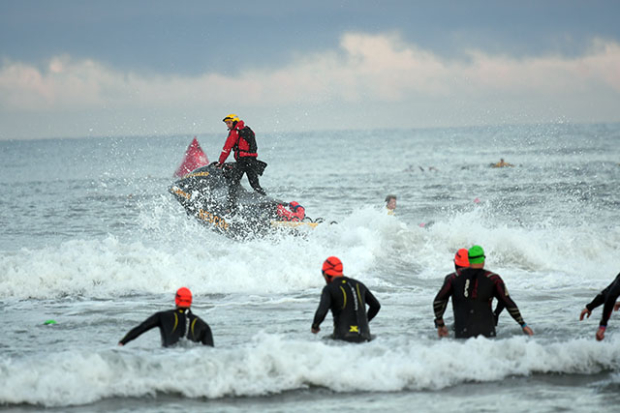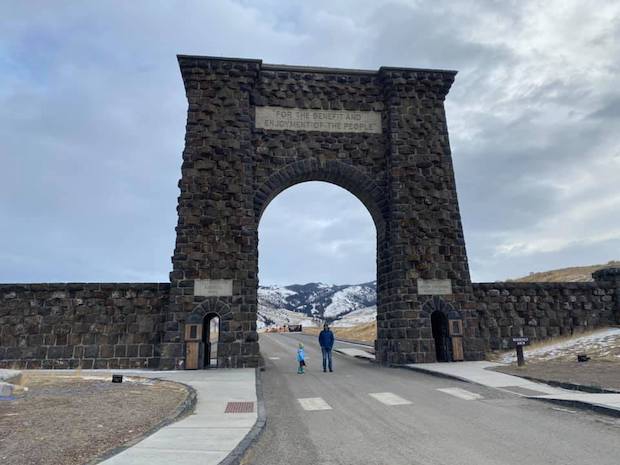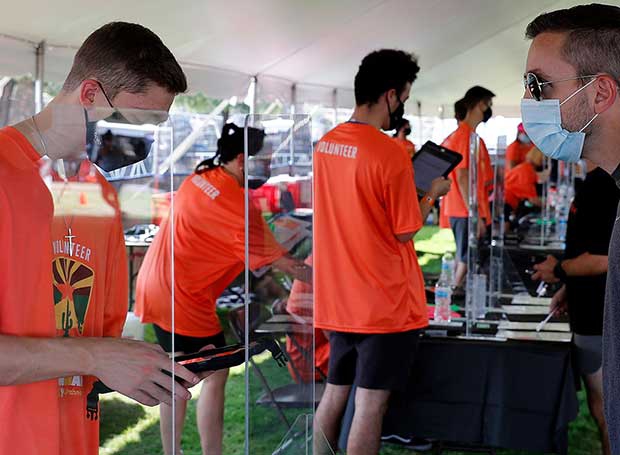Update on the 2021 Race Season
After having spoken to some dozens of race organizers; and to influencers on the ground in key regions; and after having polled our readers; here is our best current guess as to the landscape in triathlon for 2021.
We’ve heard from a number of race organizers that they’ve already moved their traditional spring races to the fall. Just today came the announcement that the Sea Otter Classic, ambitiously scheduled in May of this year – a month later than its usual April calendar date – has been rescheduled for October. Expect this to become a theme, especially in more urban areas, and especially in those states and regions that strike a more cautious public health posture.

Taking our own home state of California, there are probably 8 race organizations with events on USA Triathlon’s sanctioned race calendar through July. A number of these RDs are going to reschedule their Q1 and Q2 races. You will hear within the next week of major SoCal and NorCal races on the current April schedule moving to the Fall. The L.A. Marathon, originally scheduled for March 21, will move to May. What about big races? What about Ironman?
If your instinct tells you that IRONMAN Oceanside 70.3 on March 27th is not going to happen, it is certainly not true that IRONMAN has thrown in the towel on that date. Your instinct may be sound, but IRONMAN, according to those I talk to in the North San Diego area, is trying to make that March date work. However – and this is just one example – if IRONMAN could put on a perfectly safe race in Oceanside today, could an athlete who needs hospitalization be serviced at a North County hospital? This is one of many factors that complicate these early-season races.
IRONMAN 70.3 St. George, scheduled for May 1st, is one of those U.S. Southwestern Q2 races likely to happen, as of now. The posture of the community toward holding events; the less populated nature of Southern Utah, and those I’ve spoken to in St. George are bullish on the race. However, just as with weather or wildfires, racing is subject to the caprice of nature.
Of those with whom we’ve spoken about two-thirds of race organizers have opened events for registration. About half of them expect their first race to take place in Q2, that is, before July of 2021. The likelihood of races taking place before July is probably regional. Florida is a surer bet than California, just because of the political appetite for a mass participation event (mass in this case meaning anything over 200).

One major regional race organizer to whom I spoke has several races on the calendar prior to June, and if you look on USAT’s calendar of sanctioned events you’ll see them on that calendar. However, he confided to me that these races will not happen on those dates, and they’ll be moved to later in the year. What he said is that June and July are the iffy months. He’s got races in both months, one is pretty likely because the area is more rural, the other is in a more urban area and is more prone to political sensitivity about potential spreader events. I’m asking race organizers not to place a race on our own Slowtwitch calendar until they’re pretty confident of the date.
Most of the race organizers with whom I spoke felt that this season’s fortunes largely depend on the rollout of the vaccines: whether they continue to lag behind projections, or whether the momentum picks up.
Of those race organizers that’ve opened registration, about half report their totals are slightly or way down. About 20 percent report slightly or way up. The rest report that their registrations are flat versus historical totals, or that it’s too early to tell. This tracks with our own poll of Slowtwitchers, where 6 out of 10 say they’re “holding off for now” on registering, 8 percent say they’ll register at a faster pace than normal, and the balance say they’ll register at their normal clip.
Most of what I'm writing about is specific to North America. It is pretty easy to imagine an IRONMAN race in New Zealand in March, if the race is limited to those who reside in New Zealand.
Wiped Out?
Celebrations are – literally – part of our DNA. We pray, eat, listen to music, swim, bike and run in private. Each of those private disciplines has a public expression, which one might consider the celebration. Churches are the communal celebration of our private faith. A night out at a restaurant is our culinary celebration. A music concert, and a triathlon, are public celebrations of our private passions. In a cruel irony, we are foreclosed on holding the public celebration in each case, and business owners who did everything right will see their businesses fail through no fault of their own.
We don’t yet know what a year and a half of no racing will mean to our network of race directors and those who provide associated services. I know several race organizations that have called it quits. Several of the larger producers will pick up some of the coveted race properties. I have also heard of timing companies, and other race service providers, that are going out of business. The cost of producing a race is at least temporarily going up for those who rely on either abated fees for city services, or for volunteer traffic control, because cities are so strapped and a lot of that infrastructure has just dried up for now. This means course changes, to routes that require less traffic control manpower.
Some race organizers wonder if their races will find a good spot on the calendar in the fall – that April and May races will take place between September and November – and if successful they may stay there permanently. This may open up the Spring of 2022 to new events.
In an offsetting irony, the foreclosure on the public celebrations of our avocations has not strangled the private expression. Quite the opposite. Bike imports have declined almost annually since 2012, and it looks like bike imports for 2020 will equal 2012, which was a high water mark. Swimming and running are likewise outpacing tradition. A lot of the uptick is due to new converts to endurance sport or, at least, converts to bike riding, swimming and running (or ex-athletes who resumed these activities). It is hard to imagine now, but these industry metrics could portend well for the future of endurance events once these events resume.




